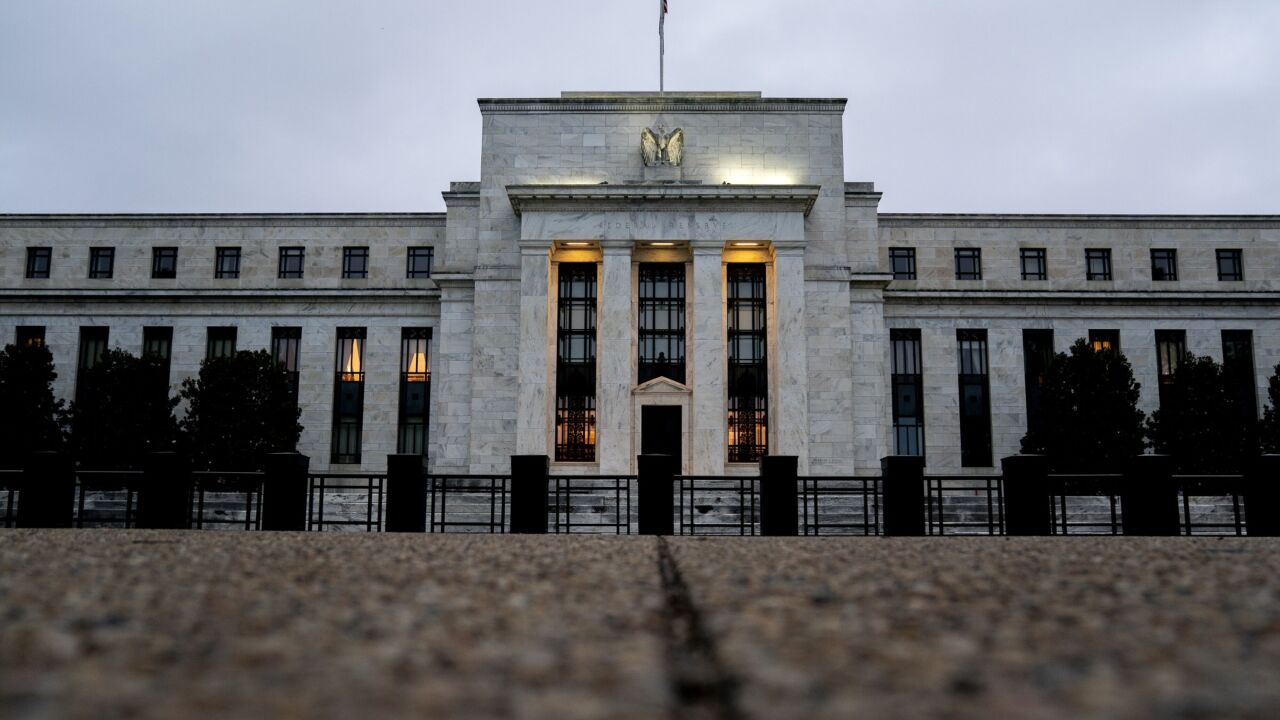KeyCorp plans to add scanners to its teller windows to convert paper checks into digital images as soon as they are presented for deposit.
A growing number of banks are using check conversion systems in back-office processing centers, but few have added the technology to their teller windows.
Tom Malengo, the senior vice president of bank operations and strategic planning at the Cleveland banking company's KeyBank, said in an interview Friday that its goal was twofold - to improve the customer's experience at the window while improving operational efficiency.
Over the summer KeyCorp analyzed tellers' activities to figure out how best to incorporate the imaging technology, Mr. Malengo said. He would not say when it would start using the scanners at the windows, nor would he discuss any other details about the timetable.
KeyCorp has been a pioneer in check image exchange; in August of last year it became one of the first two banking companies to test the SVPCO Image Payments Network operated by The Clearing House Payments Co. LLC.
Alogent Corp. of Alpharetta, Ga., announced Monday that KeyCorp is using its Sierra Xpedite imaging software.
Paul Citarella, Alogent's executive vice president of sales and marketing, said its system frees the teller to provide better customer service. Tellers can run checks and deposit slips through the scanners in any order. Alogent's system includes handwriting recognition software that reads the information on checks, including the courtesy amount and the endorsement on the back. The software also automatically balances the deposit and produces cash-in or cash-out tickets, a deposit receipt, and any other documentation that is needed.
"It does all that without any teller intervention," Mr. Citarella said. "The teller is able to spend that time focusing on the customer."
Typical customer sessions using a conventional teller system require about 55 keystrokes, but the image-capture system can reduce that figure to five, he said.
Mr. Malengo said using the automated processing would also reduce errors and improve customer satisfaction by catching math mistakes that tellers may sometimes miss. In a conventional check processing system, "that work goes to the back room for encoding and processing," he said. "The customer may get an adjustment later in the mail."
Some of the banks that capture check images at the branch do so at a back counter rather than at the teller window, out of concern that the time it takes to scan a check could slow the transaction and lengthen waiting lines. However, Mr. Malengo dismissed that notion. "We believe we can be efficient in this environment and handle the customers in an efficient and effective manner."
KeyCorp expects to save money using the imaging systems because it will no longer need couriers to deliver checks from branches to processing centers, he said.
Installing the imaging technology is part of a larger overhaul of KeyCorp's teller systems. The banking company also plans to use the BankPro Teller system from Argo Data Resource Corp. of Dallas.
Rebecca Conner, a product manager at Argo, said KeyCorp plans to use the imaging technology to redesign its tellers' jobs. Adding automation to the teller stations could let tellers become more involved in sales efforts, she said. "As they do customer interactions, this really is a big change for them."
Independence Community Bank Corp. of Brooklyn, N.Y., began testing Alogent's imaging technology at its teller windows this summer, and Northern Trust Co. of Chicago said in July that it would begin testing it this month.
Other banking companies are further along in their implementation of imaging technology at the teller window.
Carreker Corp. of Dallas announced in February that Wells Fargo & Co. of San Francisco would use its software to capture images at 3,300 branches. A Wells representative did not return a phone call Monday for comment.
Bank One Corp. of Chicago was one of the first companies to capture images at the teller window. It pilot tested Alogent's technology in the first quarter of last year and began a rollout the following quarter. (JPMorgan Chase & Co. acquired Bank One in July of last year.)
Thomas Kelly, a spokesman for JPMorgan Chase, said Monday that it converted 200 of its branches in Texas to the Bank One teller system over the weekend. Now 2,100 of the company's 2,500 branches use the technology, he said.
Alenka Grealish, the manager of the banking group at the research and consulting firm Celent Communications LLC of Boston, said that teller capture is a complex undertaking. "You're talking about a sea change in implementation, in training, in re-engineering, over hundreds or thousands of branches," she said.
Jeanne Capachin, the research director of corporate banking at Financial Insights Inc., a Framingham, Mass., unit of the Boston technology publisher International Data Group Inc., said banks of all sizes are investing in technology to capture images at the back counter of a branch, but have not implemented it yet.
One holdup is the relatively slow growth of image-based check clearing, she said. Several image clearing systems are either in use or being tested, including those being offered by The Clearing House, Viewpointe Archive Services LLC, and Metavante Corp., but the number of checks being cleared electronically remains low.
Until banks can exchange and clear checks using images, they must print image replacement documents, either for processing in their own back offices or to deliver to paying banks, Ms. Capachin said. Printing the IRDs creates additional work for bank employees, she said.
Ms. Capachin said banks that are not ready to update their teller systems are more likely to begin converting checks into images in the back office.
The economics of imaging - especially the elimination of transportation expenses - will continue to drive banks to invest in the technology, at the least in the short term, she said. "There's going to be a lot of spending now and for the next two years."





